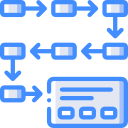Automating Payroll Reporting: Efficiency Without Compromise
Chosen theme: Improving Efficiency in Payroll Reporting with Automation. Step into a smarter payroll world where repetitive tasks run themselves, reports arrive on schedule, and compliance is built-in. Subscribe and share your goals—what’s the one payroll report you most want automated this quarter?

Why Automation Transforms Payroll Reporting
Manual payroll reporting steals deep-focus hours with copy-paste marathons and late approvals. Automation schedules data pulls, formats outputs, and routes approvals, so analysts spend time investigating insights, not wrangling cells. Where would you reinvest five regained hours every payroll period?


Why Automation Transforms Payroll Reporting
Automated validations catch missing employee IDs, negative net pay anomalies, and jurisdiction mismatches before reports finalize. Built-in rules and reference tables enforce thresholds consistently. Instead of hunting errors afterward, the system prevents them, producing reliable payroll summaries auditors can trust without extra back-and-forth.
The Tech Stack Behind Effortless Payroll Reports
01
Use secure API or SFTP connectors from HRIS, timekeeping, and benefits platforms to standardize inputs. Apply schema mapping and deduping early, before calculations. Reliable ingestion reduces downstream chaos, making payroll reporting automation simpler, faster, and less brittle when business rules inevitably change.
02
An orchestrator coordinates jobs—pull data, validate, transform, publish—while RPA bridges gaps for legacy screens. Each step logs status and results, so failures surface instantly. Orchestration ensures payroll reporting runs on time, every time, even when upstream systems lag or partial data appears.
03
Every transformation script, parameter, and output deserves version control. Tag releases to pay periods, keep immutable logs, and retain prior outputs for quick comparisons. When a late overtime file appears, rollback lets you regenerate corrected payroll reports without fear or frantic spreadsheet archaeology.
A Practical Playbook to Automate Your Payroll Reports
Whiteboard every step: data arrival, checks, calculations, approvals, publishing, and archiving. Time each task and capture error types. Set precise targets like “cut cycle time from eight hours to four.” These targets anchor your payroll reporting automation and define what success truly means.





Human Stories: Change, Skills, and Adoption
At a regional retailer, Marisol mapped her monthly payroll variance report, then automated ingestion, checks, and delivery. Cycle time dropped from ten hours to six the first month, then four. Her team now spends mornings explaining insights to operations instead of hunting formula errors.
Human Stories: Change, Skills, and Adoption
Short workshops on data validation, basic SQL, and workflow tools empower analysts to automate their own recurring steps. Paired reviews maintain standards while spreading know-how. Payroll reporting automation sticks when the doers can also improve the system, not just follow instructions.
Metrics That Prove Efficiency Gains
Cycle Time and On‑Time Delivery
Measure start-to-finish time per report and the percentage delivered on schedule. Automate timestamps for each stage so evidence is objective. Reliable payroll reporting means deadlines become predictable, enabling downstream teams to plan confidently without buffer days or anxious last-minute confirmations.

